Learning plan
Table of Contents
Suffering from low learner engagement rates?
Having trouble gaining respect from the C-suite?
You’re not alone. Many L&D professionals struggle to achieve and sustain employees’ attention — let alone the ROI leadership expects.
One thing that can help: An effective learning plan.
By outlining your goals for L&D across the organization and the steps required to achieve them, you can better enable employee learning, prepare your workforce for the future, and boost your company’s bottom line.
But what is a learning plan, and what can it offer your organization?
In this guide, we’ll explain how to create a learning plan for your employees and share key aspects to consider along the way.
You’ll learn:
- What a learning plan is
- Steps to building a learning plan
- The three benefits of a learning plan
What is a learning plan?
A learning plan is a tool used to outline and manage employee learning and development over a set time period. Learning plans specify how users can achieve desired outcomes, such as security and compliance understanding, better teamwork and leadership, and other role-specific skills.
For employees, personalized learning plans can be an extremely beneficial resource. Employees get onboarded quickly and understand the skills they need to excel and grow at the company. According to LinkedIn, 94 percent of employees say they would stay at a company longer if it invested in their learning and development.
But developing robust learning plans takes significant time and effort.
Developing a learning plan for the workplace
The goal of a learning plan is to facilitate learning. To make it easy to follow, consider:
- Each employee’s current skill set
- Your organization’s future goals (and the learning outcomes needed to meet those goals)
- Your company’s goal-setting process
- Your team’s learning needs
- Learners’ preferred learning styles
Integrating organizational and individual needs is a big win — you get a more skilled workforce, and employees get closer to the promotion they have always wanted.
Six steps to develop a learning plan for your employees
Follow these six steps to develop a learning program that motivates your employees and achieves your desired learning objectives.
Step #1: Set the learning goals for your learning program.
Every great learning program starts with research.
Start by engaging with employees and their managers to determine learning needs, and use those interviews to inform your goals.
But don’t just set any goals — make them SMART:
- Specific: Document exactly what employees should get from each lesson and how it applies to their role.
- Measurable: Share how you will be tracking employees’ learning progress. It could be in terms of quiz scores, writing reflections completed, increases in their self-reported confidence level, or results of before and after surveys from their managers.
- Achievable: Ensure that the outcomes you’re expecting from your learning program are realistic. Use KPIs from the previous few years to gauge whether your goals are too steep.
- Relevant: Align your goals with your overall business objectives. Each learning should be tied to an OKR or segment of your company’s overall strategy.
- Timely: Create a timeline for your learning program. This should include each course’s start and end dates and monthly or quarterly updates on learning outcomes.
Step #2: Carry out a skills gap analysis.
The World Economic Forum’s recent Future of Jobs Survey found that 50% of current workforce skills will significantly shift by 2025. And as technology evolves, your company may encounter a skills gap or shortage of employees who can handle new technology.
To counteract this trend, you’ll need to upskill your employees. The first step is to perform a skills gap analysis to identify the necessary skills employees lack.
First, pull a list of the departments and roles in your organization and research the kind of knowledge and expertise that will be critical in the next two to five years. Book time with department heads to share your findings and ask them for their feedback.
Then, cross-check this list with the courses you already offer, your employees’ CVs, their past training, and performance. This exercise will give you a real-time picture of your company’s overall skills landscape and the new content you need to develop and deliver.
To accelerate this process, you can use AI algorithms or hire an outside consultant.
Step #3: Select a format for your learning plan.
There are many training formats you may want to consider. Here are a few to get your juices flowing:
- Instructor-led learning is the most common training format. A qualified facilitator communicates their ideas and concepts to staff members.
- Experiential learning is another common strategy that integrates presentations with active learner participation. Experiential learning can involve role-play, simulations, group activities, and games to encourage learners to apply what they have learned.
- Online training allows learners to learn at their own pace, working through online modules, watching videos, and attending interactive webinars.
Remember, each learning format has benefits and drawbacks. No one-size-fits-all approach to learning exists, and no two employees are the same.
If you have the resources to do it, consider building personalized learning plans and templates to address the core competencies needed to excel in each role.
Note: This may necessitate integrating various types of learning activities and formats.
Step #4: Get top management on board.
Employee training in a large organization requires significant time and resources. To develop a state-of-the-art learning program, you need leadership buy-in.
Part of that buy-in will come from relating learning to the bottom line.
Show that you’ve done your research by predicting the top skills employees will need to succeed in the future and speaking with department leadership. Review the KPIs you’re measuring and share how increased creativity, improved customer satisfaction, and better teamwork and collaboration can positively impact revenue.
And don’t just do this once — keep them updated on ROI throughout the learning journey so they see the program’s value.
Step #5: Take stock of existing training resources.
Just because you’re creating a learning plan doesn’t mean you have to reinvent the wheel. Before you start developing brand-new content, ask yourself:
- How much budget do we have for new content?
- What content can we reuse, and how can we repurpose it?
- Does X department really need a new learning program? If there is justification for it, how long will it take to get it up and running?
- Does the organization have the modern learning tools your learning program demands?
- What staff is available to assist with course creation?
Step #6: Evaluate and revise your learning plan.
Continuously monitoring your learning plan can help you gauge its effectiveness. Schedule monthly or quarterly touchpoints with your L&D team and the departments you serve to determine whether your learning plan is meeting the goals you set in Step 1.
Ask employees and their managers to provide feedback regarding course effectiveness and the usefulness of new knowledge gained or skills learned.
Analyzing this feedback and examining gaps in employee performance will highlight weaknesses in the learning plan you can rectify. If your plan isn’t helping you meet program expectations, it might also be time to revisit your goals and format.
Three benefits of having a learning plan for the workplace
A solid learning plan:
1. Offers employees growth opportunities.
Unfortunately, many people may view their jobs as a means to an end. They have a fixed mindset about professional development and do not expect to find joy in the job — they just care about the paycheck.
But working on autopilot has a more detrimental impact than leadership may realize. Employees who feel stuck are more likely to explore other jobs or abandon their career goals altogether.
Developing an effective learning plan keeps your employees invested in their own learning and personal development. Employees who don’t feel challenged can attend training sessions to improve their skills. And with their newfound self-confidence, they can take on more responsibility or switch to a new role.
In addition to helping employees find a new purpose within the organization, a well-constructed learning plan creates a culture of positivity and productivity that ultimately improves the company’s bottom line.
2. Better prepares your workforce for the future.
In today’s ever-changing business landscape, one-off employee educational programs are not enough. The reality is that organizations must upskill their workforce regularly, helping employees adapt to new trends and adopt the latest technology.
Learning plans are a forcing function for deeply assessing the current skill set of your staff and the skills they will need in the future. Working with management to determine other skills employees will need helps you address and resolve current and future skills gaps.
3. Decreases staff turnover.
Continuous learning experiences are essential to retaining the organization’s top talent. Learning keeps them motivated, engaged with their managers, and gives them the tools to tackle new and exciting obstacles. 60% of employees say the ability to do what they do best in a role is important to them, boosting engagement, performance, and retention. Gaining satisfaction from their work keeps employees around, saving companies thousands of dollars in the long run.
What is the learning plan for your organization’s employees?
Getting learning and development right is key to helping your company achieve and maintain a competitive edge
Putting time and effort into developing a robust learning plan will help you build a more qualified team, happier employees, and a more productive workforce.
For more information about learning plans and other learning strategies, check out our glossary.








